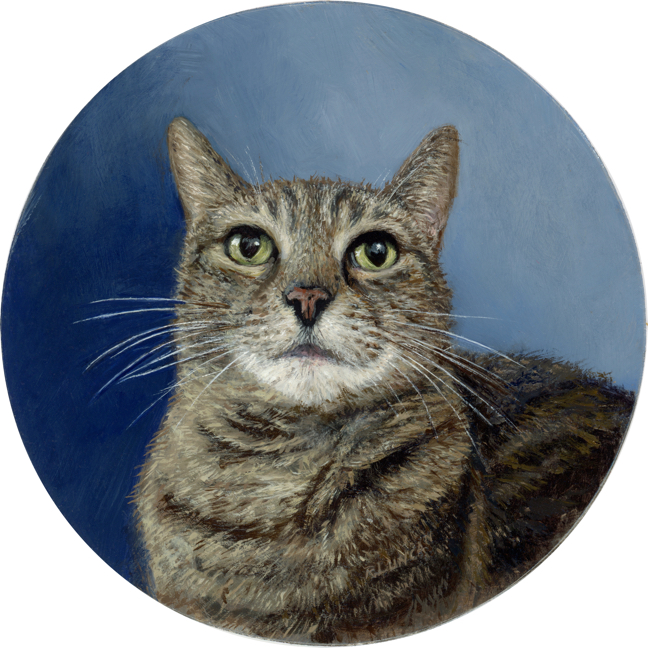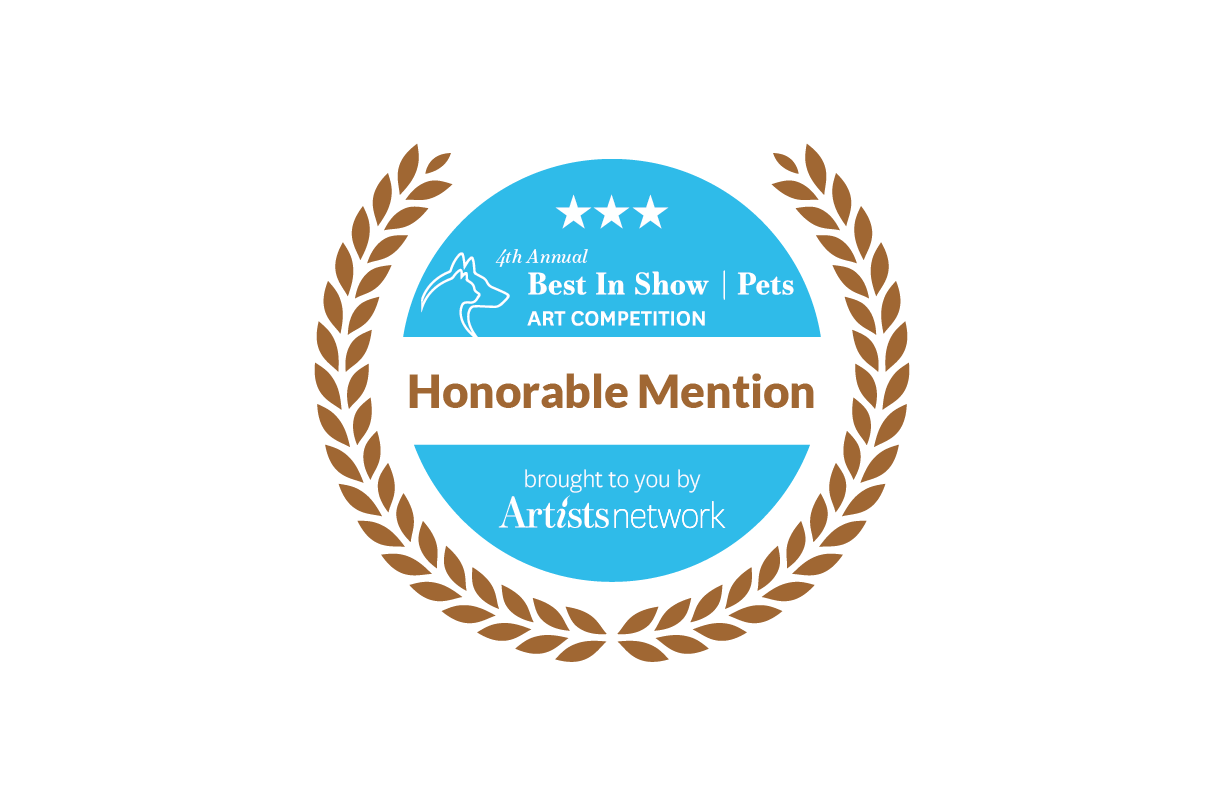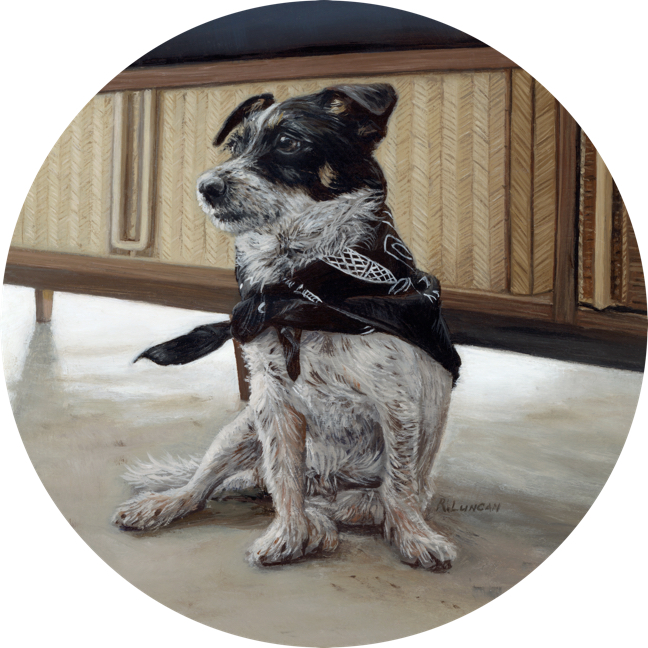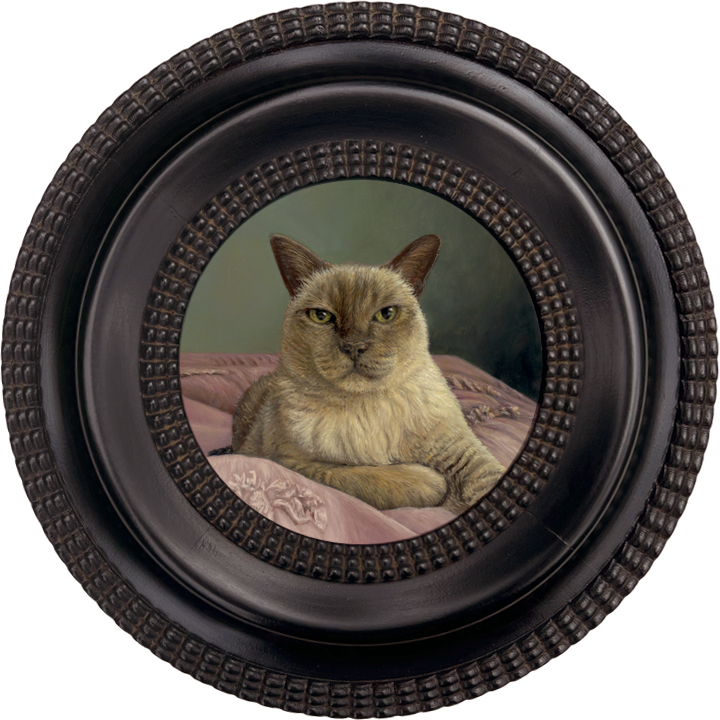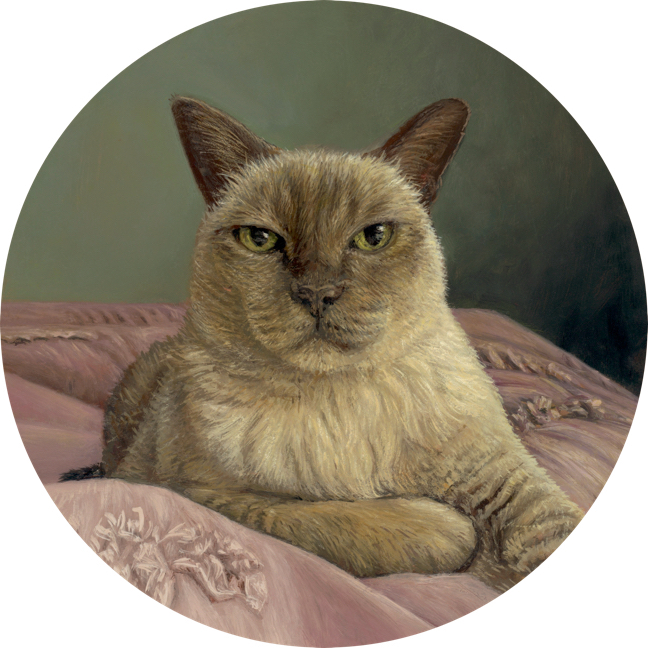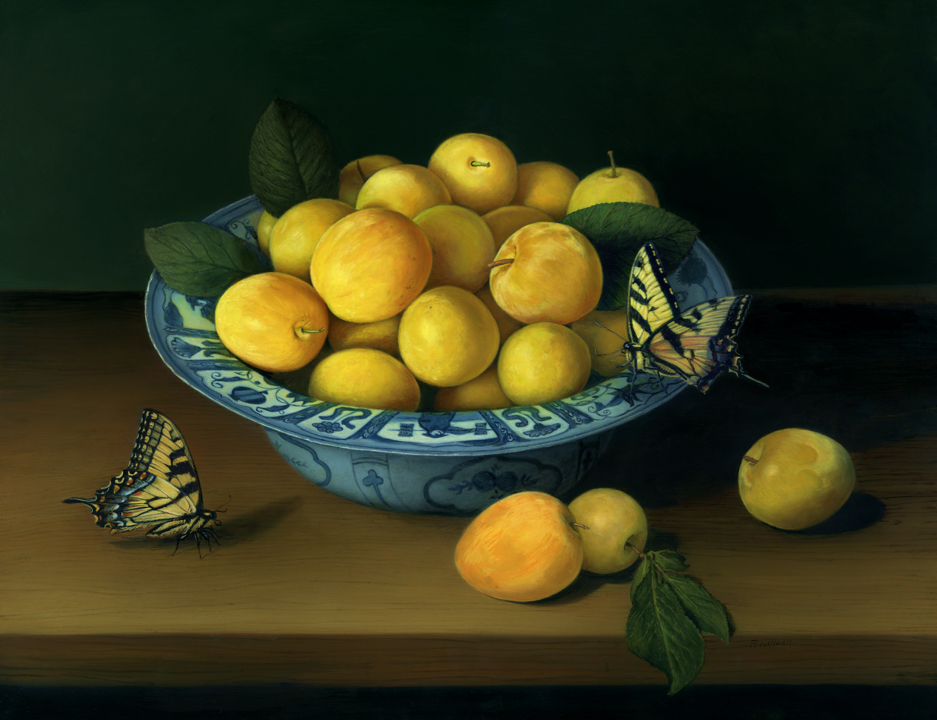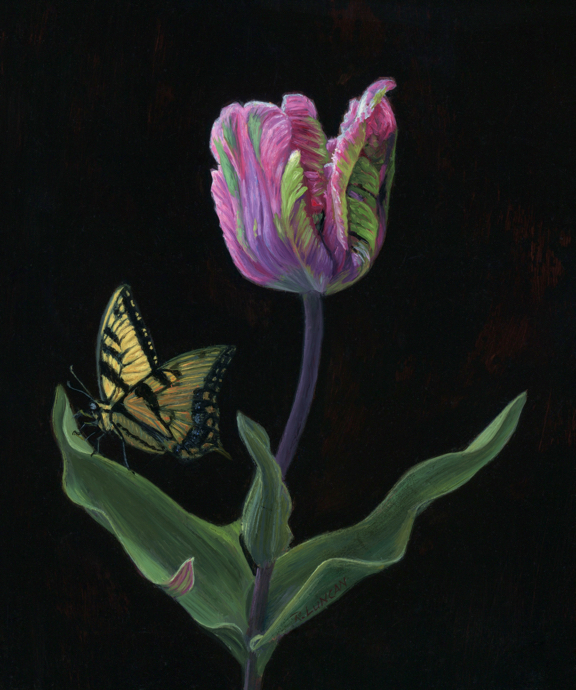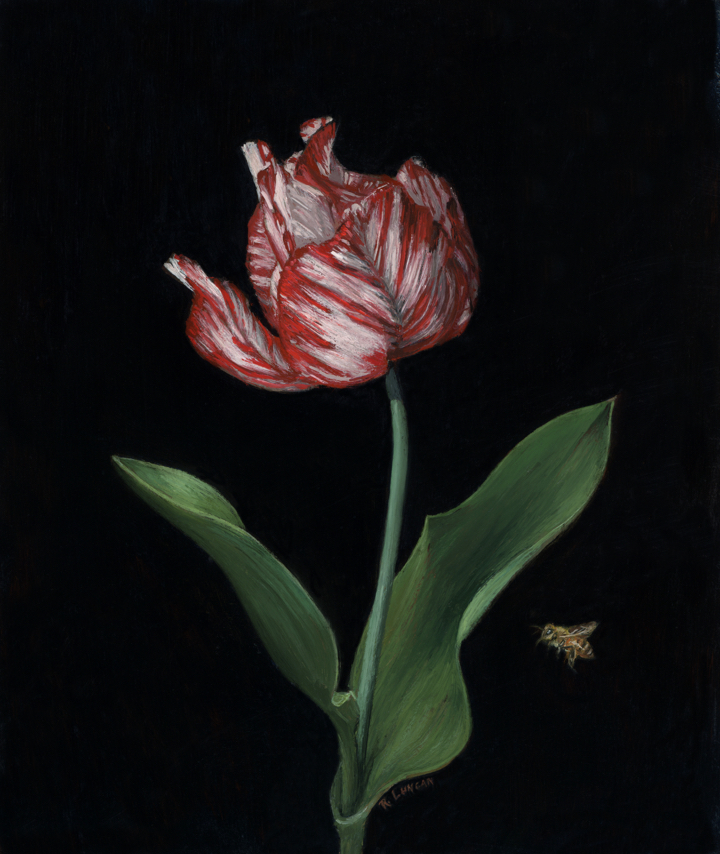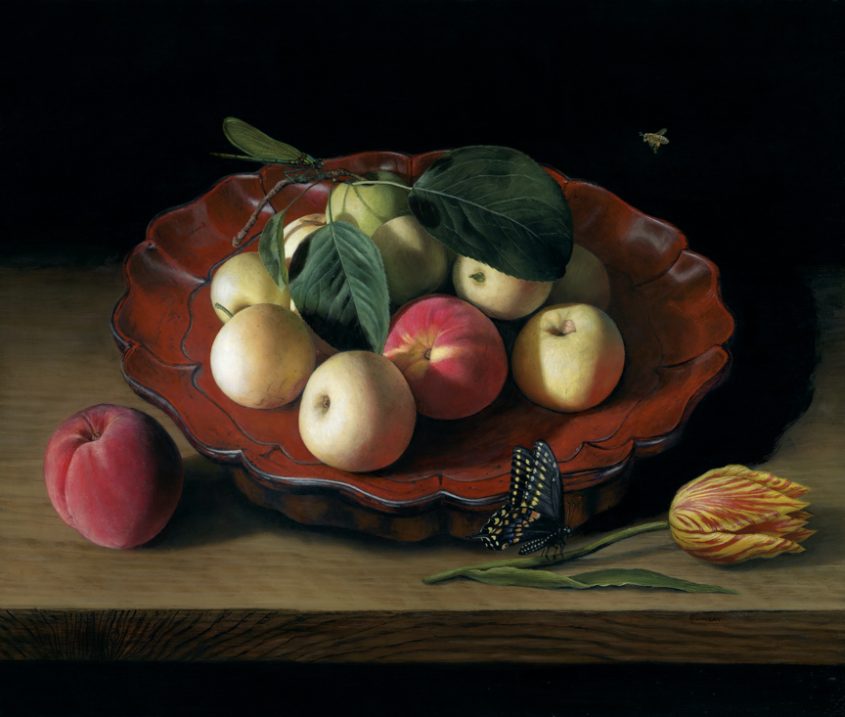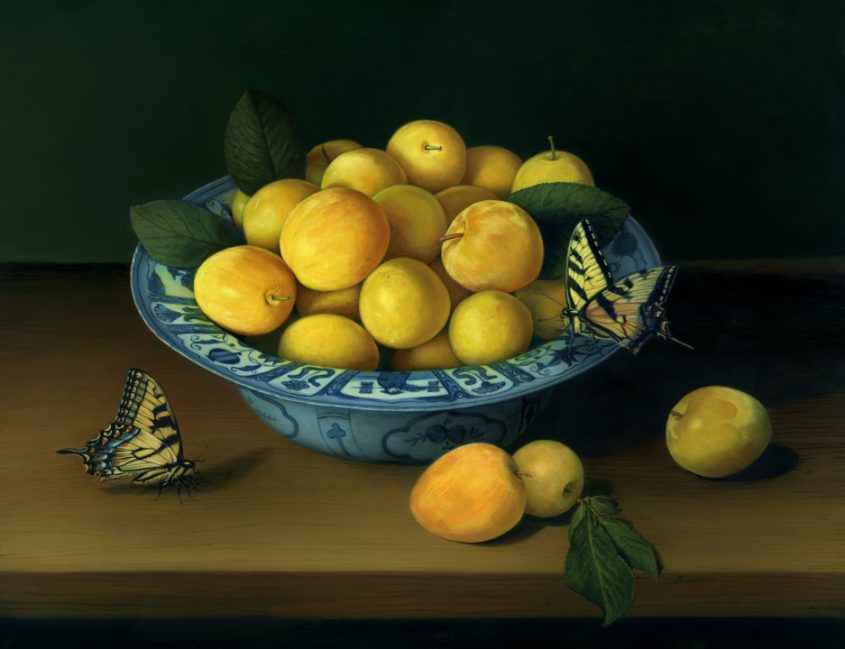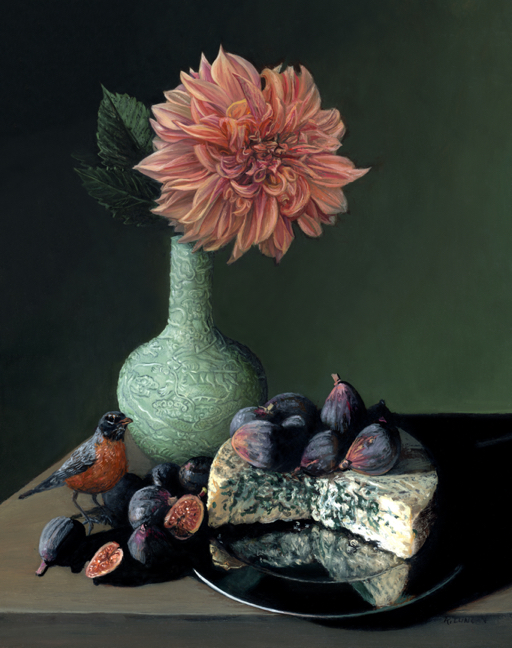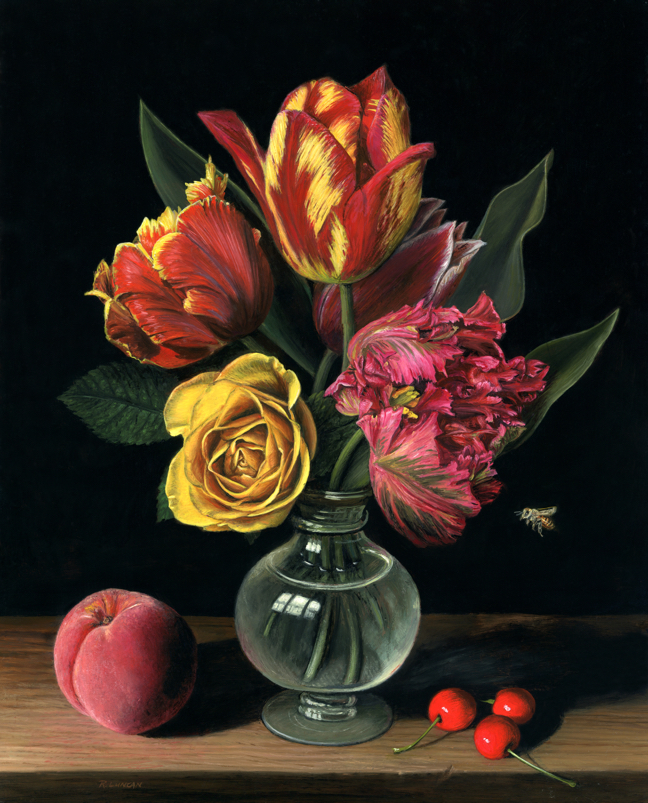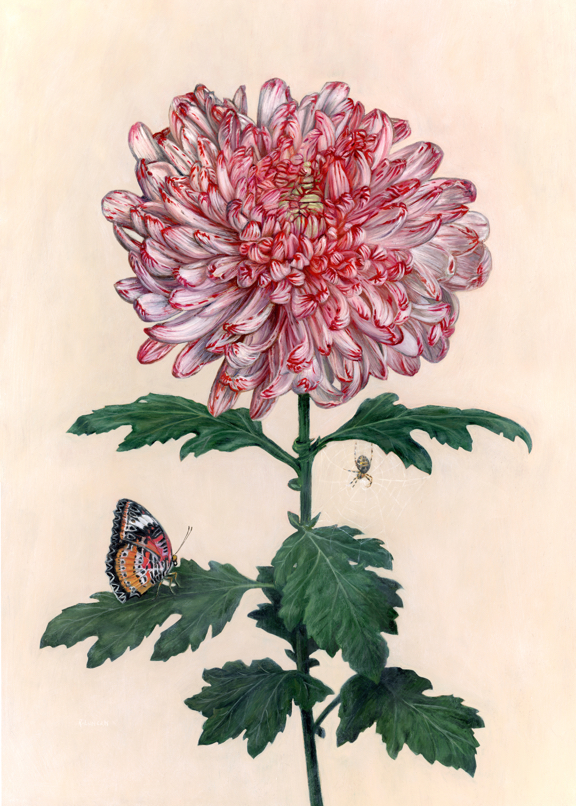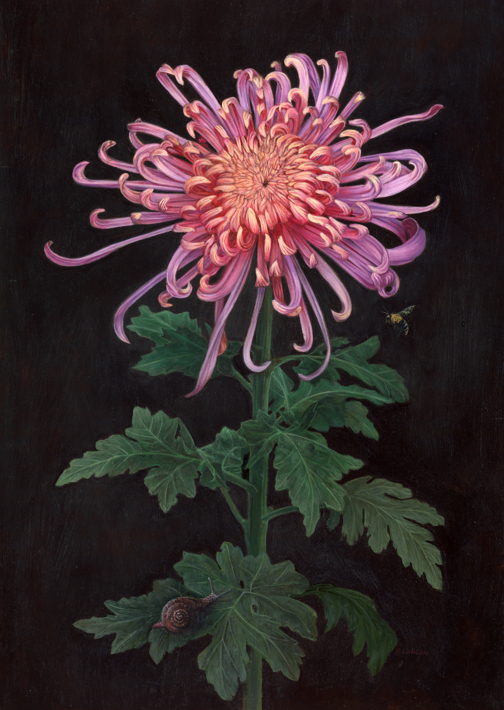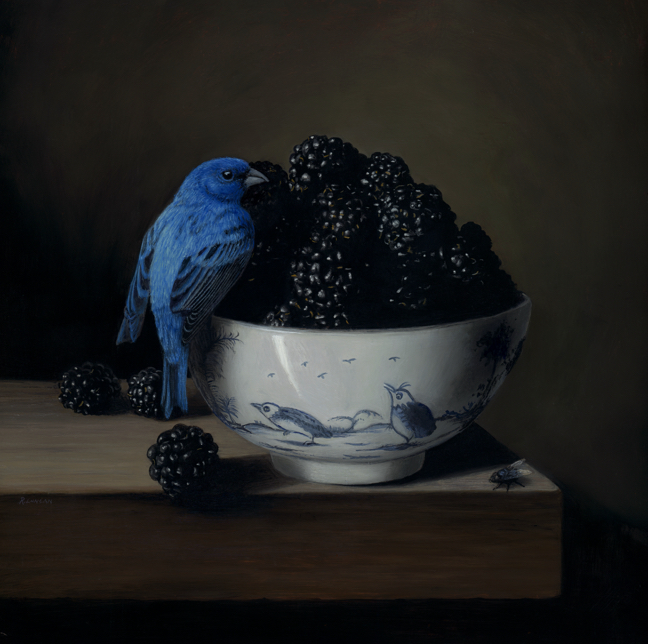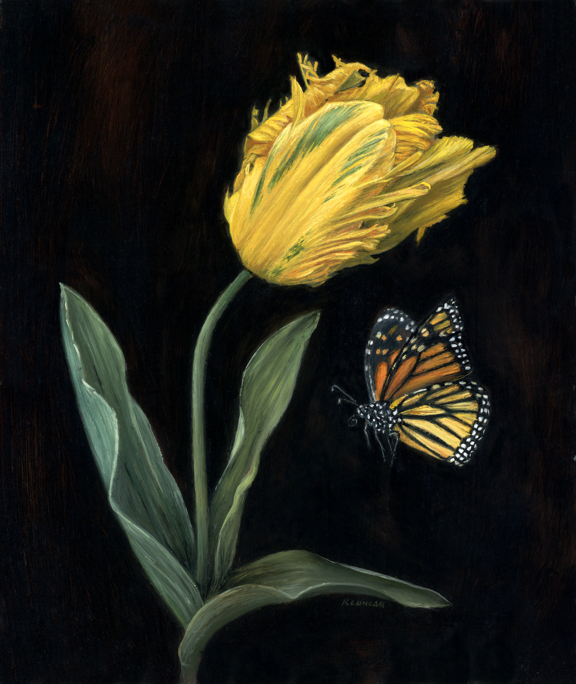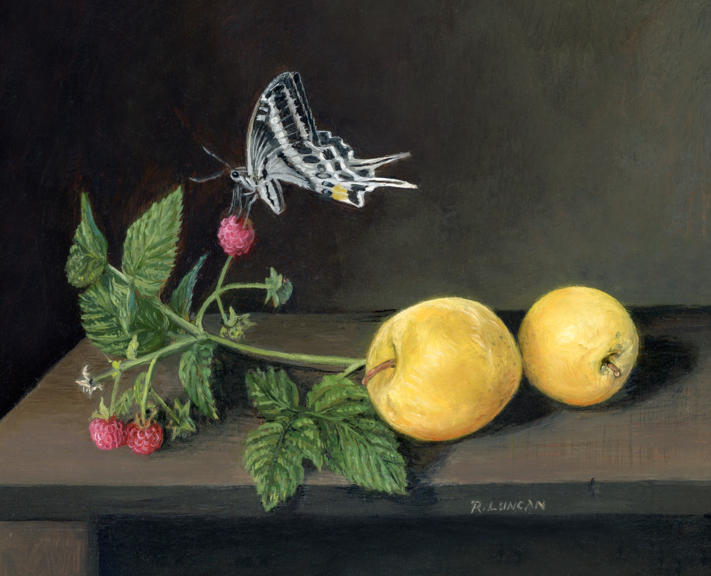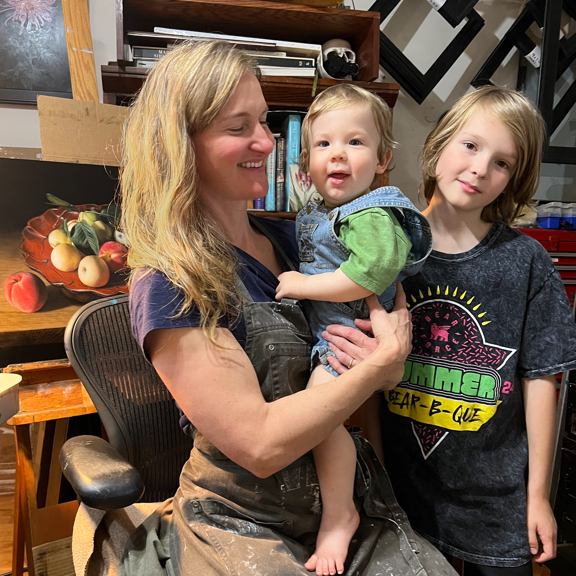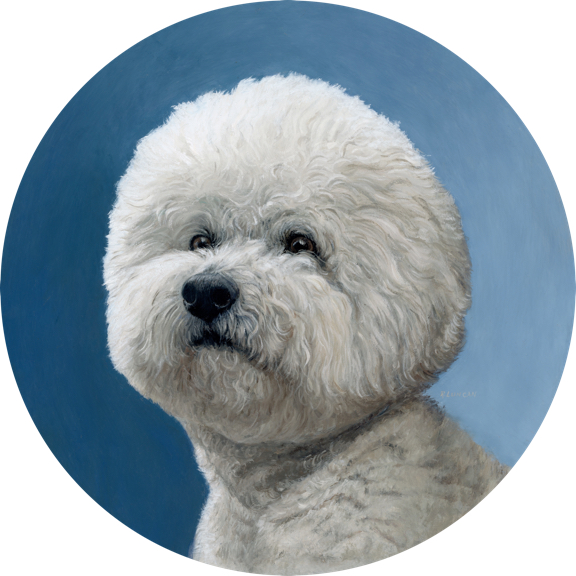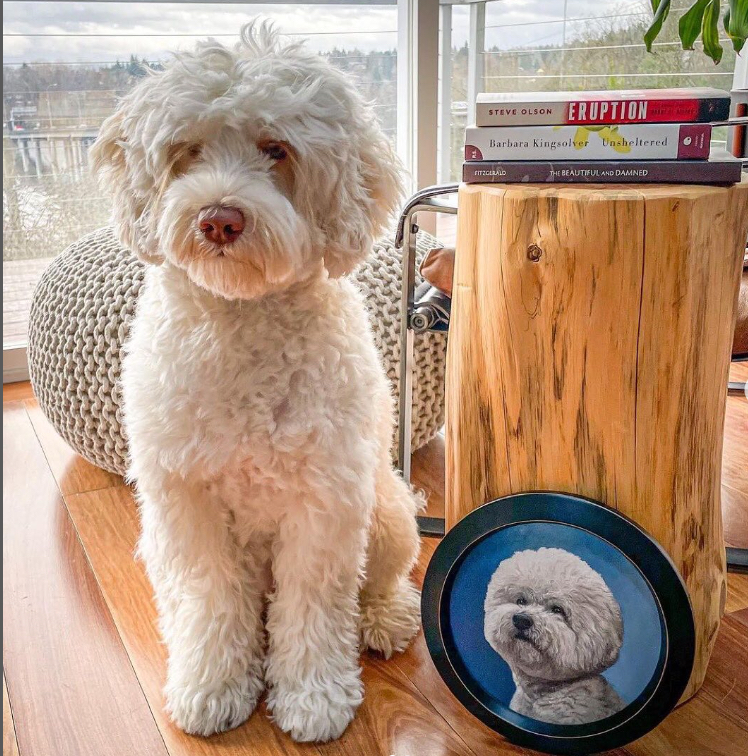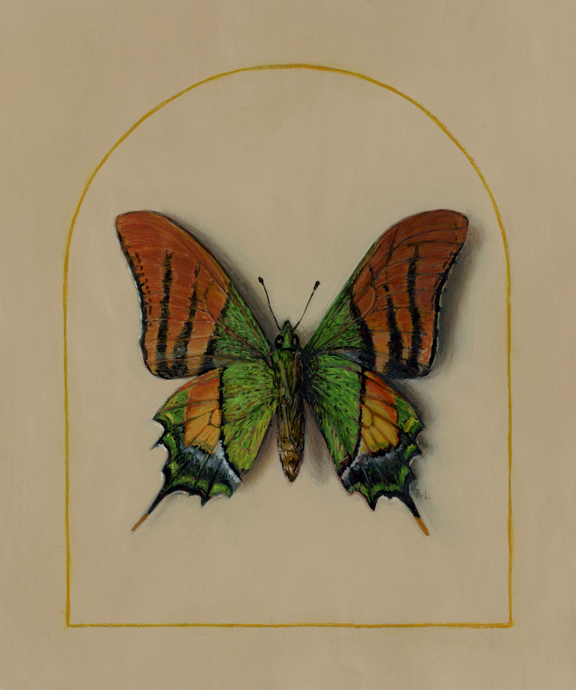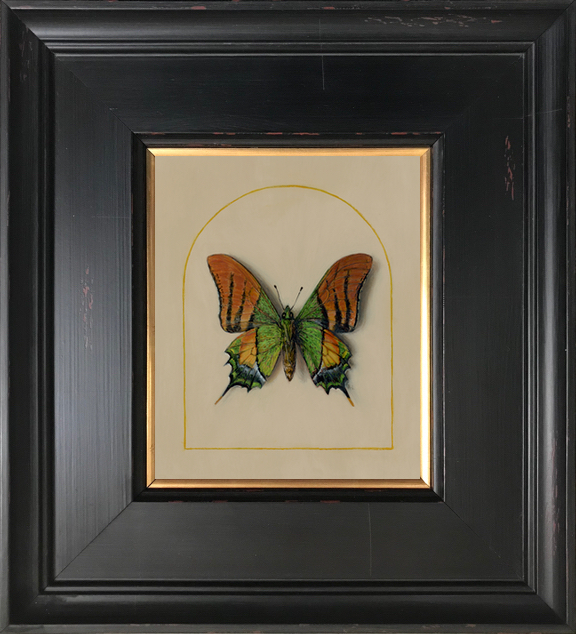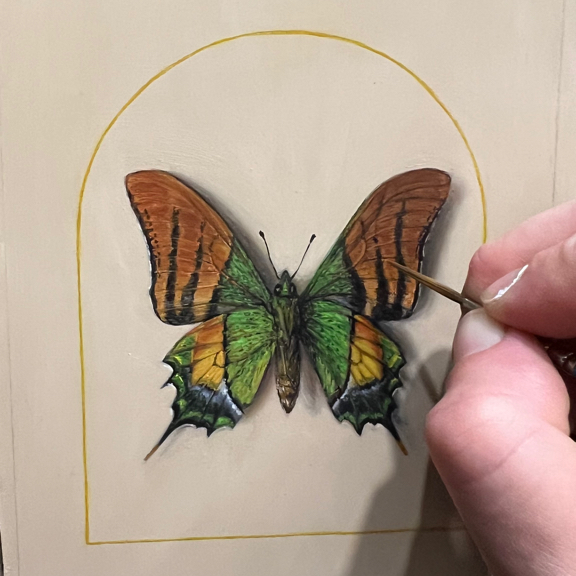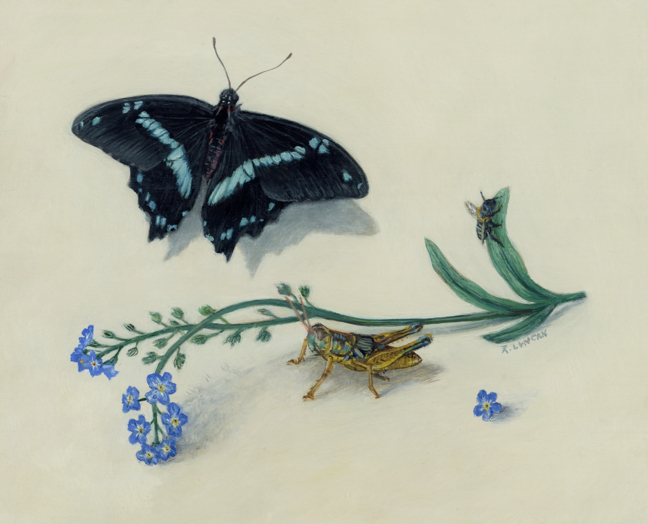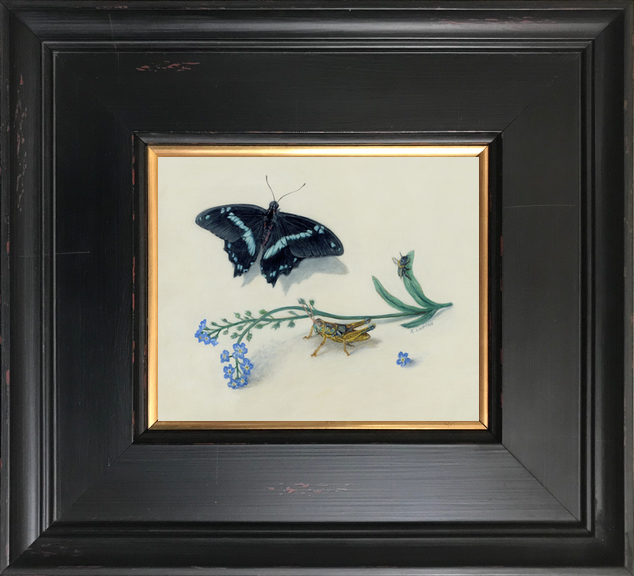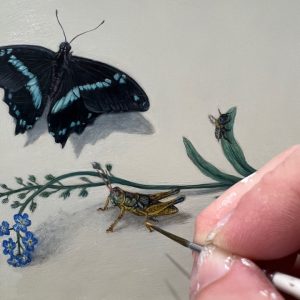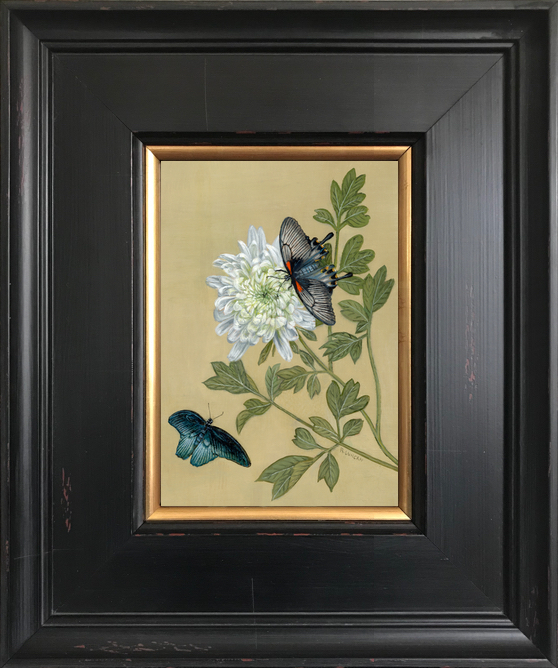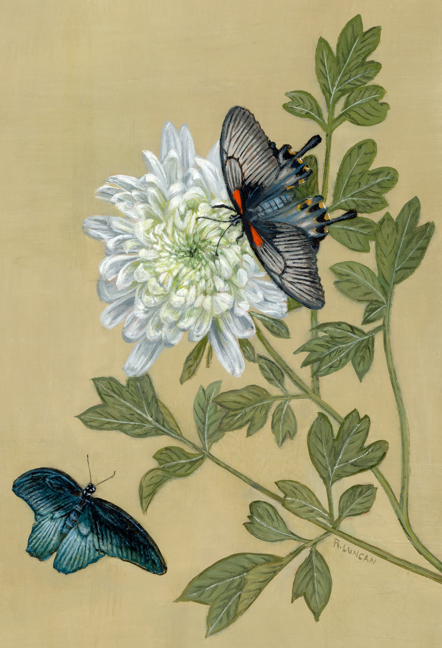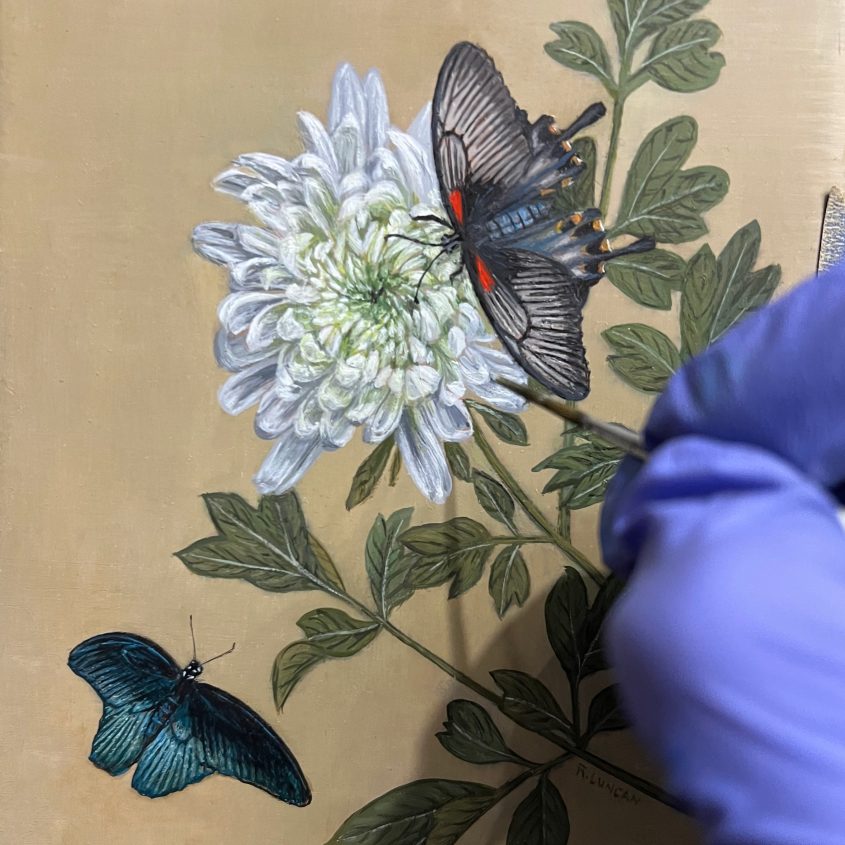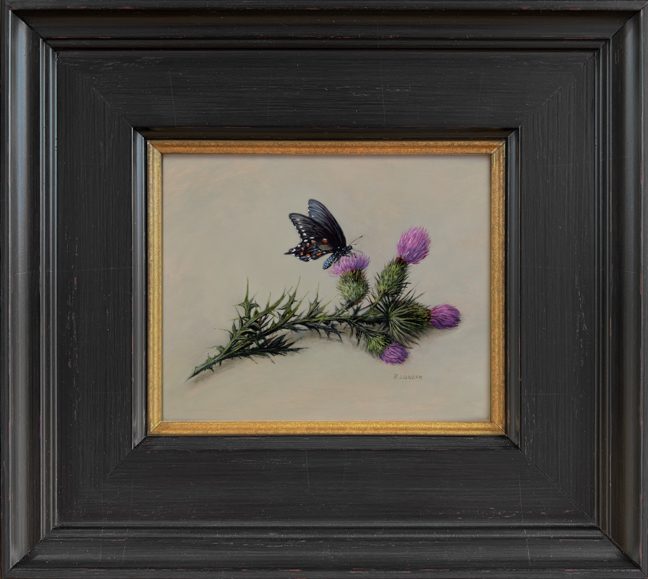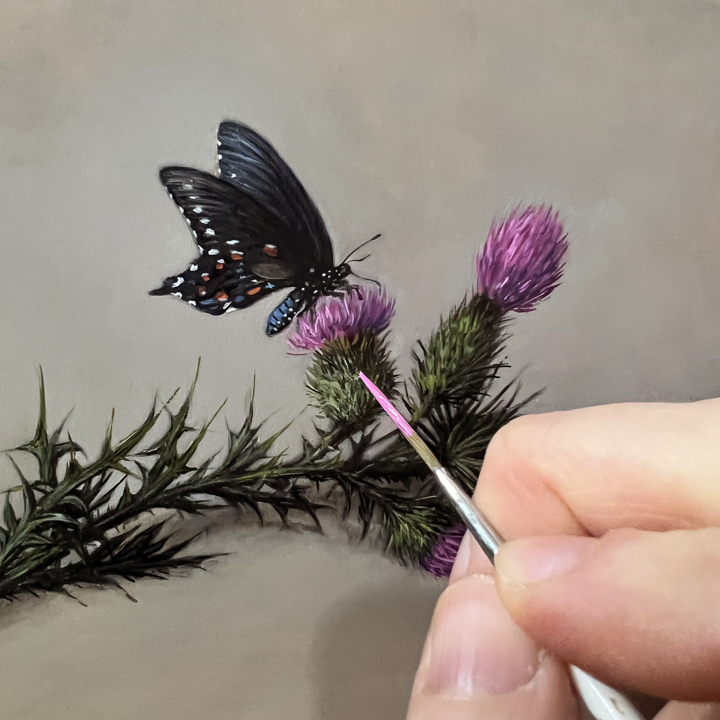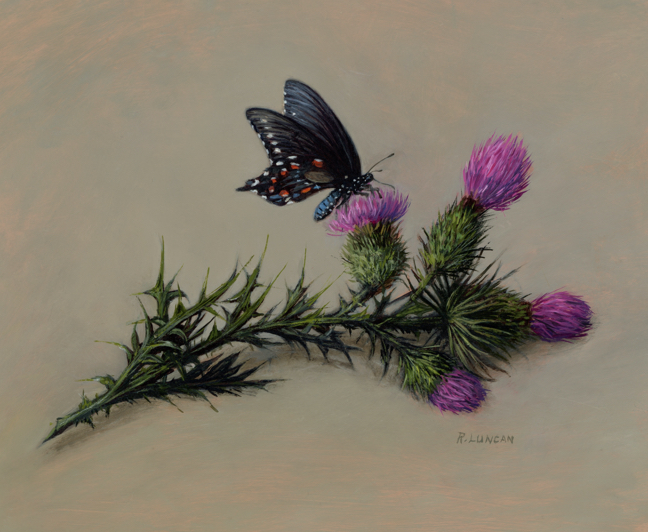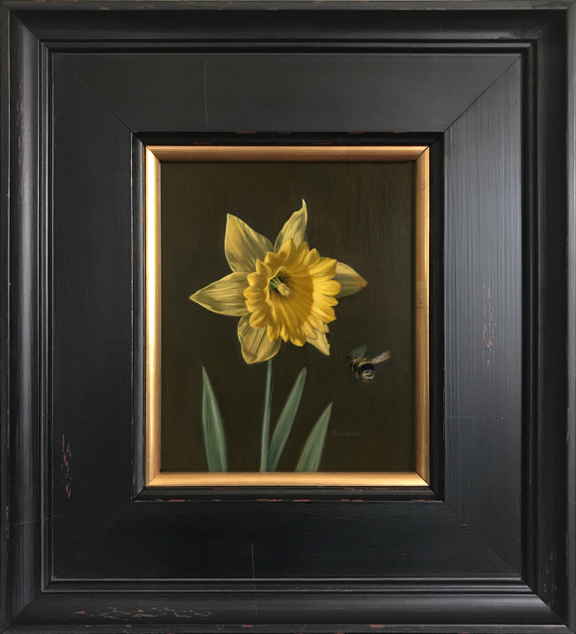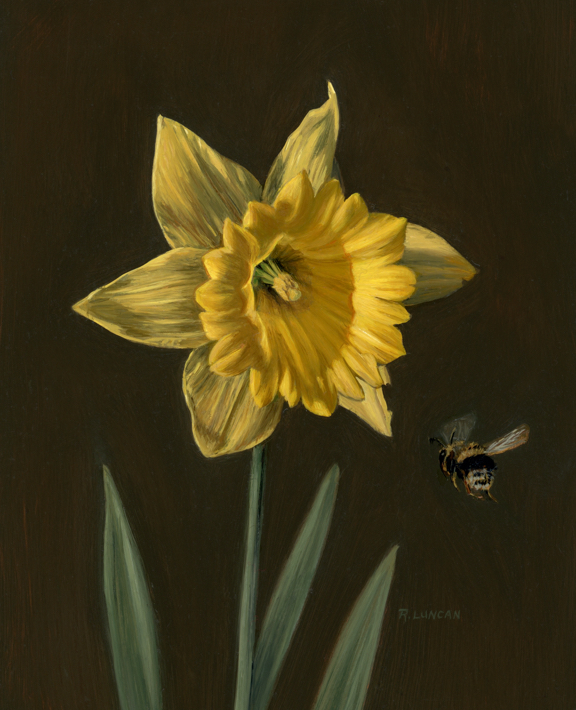This painting of Kiki was a surprise gift commissioned by my friend Natasha for her husband, Dustin. We planned everything in secret, and I created several mock-ups before she chose the final composition—a round 4 x 4″ oil painting on aluminum with a soft grey-blue background.
Natasha and her family live nearby, so instead of mailing the finished portrait, they came to the studio to pick it up. I packed it in a gift box for the final reveal. I rarely get to witness someone seeing a finished portrait for the first time—most are shipped off with only an email or photo in return—so it was incredibly moving to be there in person. I got to see everything: the surprise, the tears, and the love that lingered long after the box was opened.
Remembering Kiki
Kiki had been with Dustin since before he and Natasha got together. She passed away in 2019, but her memory is very much alive. She had a strong, no-nonsense personality with a silly streak. She loved playing fetch with hair ties, sunbathing in the backyard, and fiercely protecting the other cat from their dogs. She was always gentle with their son, Sébastien, though she refused to give up her spot on the changing table when it suited her.
A Painting Full of Love
This kind of project is why I love what I do—capturing not just a likeness, but a loved one. Creating a portrait is always meaningful, but being there to witness someone connect with their pet through my artwork was a rare gift.
“It looks perfect! Thank you so much :). I can’t wait to see it in person!”
—Natasha
If you’re interested in commissioning a portrait as a gift, please note that I’m typically booked about a year and a half in advance. However, I offer gift vouchers for those who’d like to give something sooner or involve the recipient in the design process.
